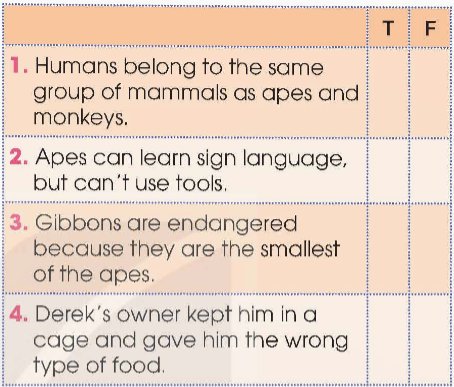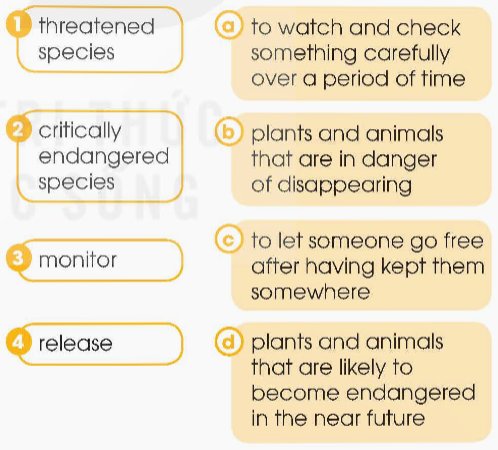Listen and read.
Ms Smith: Welcome to the Endangered Primate Rescue Centre! If you have any questions during the tour, don't hesitate to ask me.
Mark: I've just seen a monkey in the enclosure. So are primates just monkeys, Ms Smith?
Ms Smith: No, primates are a group of mammals that includes not just monkeys, but also humans and apes.
Mark: What's the difference between apes and monkeys?
Ms Smith: Well, apes don't have tails and are larger than monkeys. Their brains are also larger. They're as good at using tools as they're at learning sign language.
Mai: So how many primates live here?
Ms Smith: The centre is home to more than 170 primates representing 14 species. They're housed in large enclosures.
Mark: I can hear some sounds. Is someone singing?
Ms Smith: We're close to the gibbons' enclosure, and the male and female gibbons are singing. Gibbons are the smallest of the apes, and all seven species are regarded as threatened. In fact, five of them are listed as critically endangered.
Mai: What is the main threat to gibbons?
Ms Smith: It's habitat loss due to deforestation and illegal hunting. Poachers make a big profit out of selling gibbons as pets and for making traditional medicine and food.
Mai: So we can help gibbons if we stop keeping them as pets.
Ms Smith: That's right. Now let me show you Derek, the gibbon we rescued last week. He was locked in a cage for two years as an illegal pet.
Mai: Oh no, he's so thin.
Ms Smith: Yes. Gibbons can become ill or weak unless they're fed the right type of food. After examining Derek, our veterinarian also found head injuries. So we'll give him a suitable diet and monitor him for several weeks before we release him into the national park.

